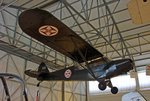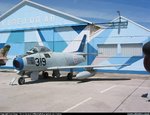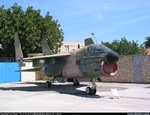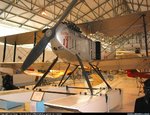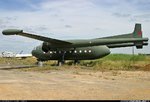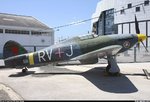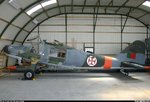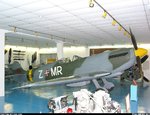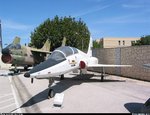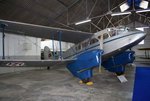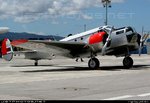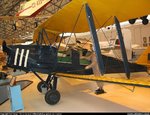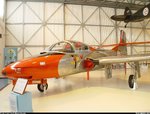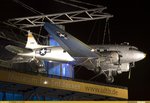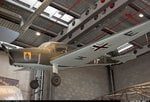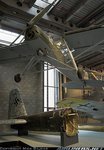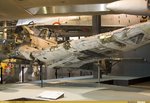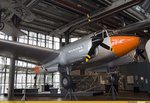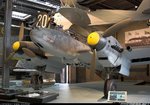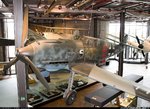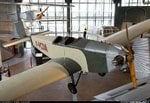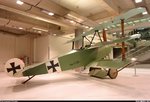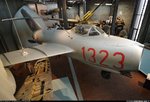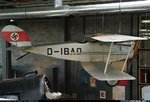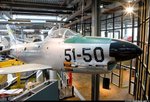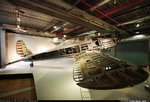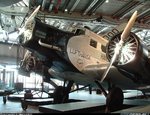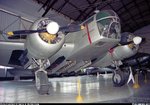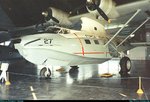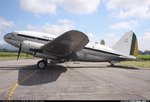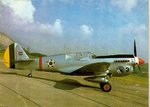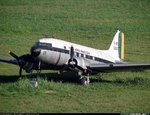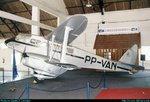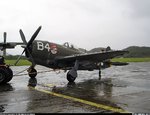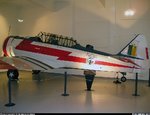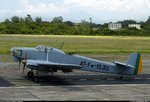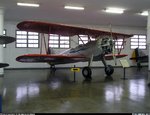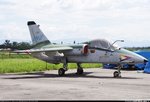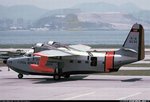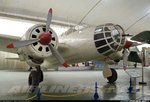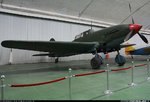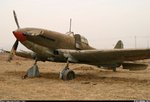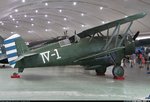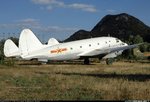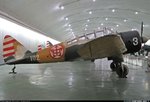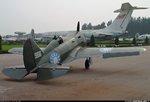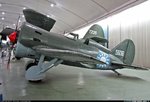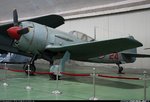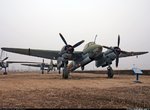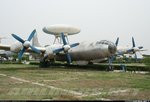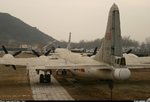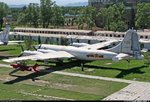Nice shots! Keep them coming.
Navigation
Install the app
How to install the app on iOS
Follow along with the video below to see how to install our site as a web app on your home screen.
Note: This feature may not be available in some browsers.
More options
You are using an out of date browser. It may not display this or other websites correctly.
You should upgrade or use an alternative browser.
You should upgrade or use an alternative browser.
Museums around the World
- Thread starter gekho
- Start date
Ad: This forum contains affiliate links to products on Amazon and eBay. More information in Terms and rules
More options
Who Replied?- Thread starter
- #22
The Portuguese Air Museum (Museu do Ar) at Alverca is the most accessible part of the Museu do Ar, being open at advertised hours and without any prior appointment being necessary. It is housed in a modern hangar at the Portuguese Air Force's base at Alverca. The museum lies next to the main railway line from Lisbon to Santarém and is adjacent to the station at Alverca.
The Alverca air museum (3000 sq. metres) opened on 1 July 1971 with exhibits which included a D.H. Vampire, donated by the South African Air Force and replicas which included the 'Santa Cruz' Fairey IIID aircraft of Gago Coutinho and Sacadura Cabral- the original of the last of the three Faireys used in this epic trip is displayed in the Lisbon Maritime Museum at Belém. Today, the Alverca museum occupies 3000 sq metres of indoor and outdoor display areas. Of 112 aircraft owned by the museum, some nineteen are on display, along with aero engines and other aircraft parts. There is also a wealth of model aircraft, uniforms and memorabilia. The display hangar comprises a modern installation of aircraft, some of which are suspended from the roof. Amongst the aircraft to be seen are replicas of a Blériot IX, the first aircraft to fly in Portugal, and a replica of the Demoiselle (1909), one of the pioneering Brazilian aviator, Santos Dumont's aeroplanes. Other exhibits include a Spitfire Mark V in Portuguese Air Force camouflage livery. The more modern era is represented by a mock-up of POSAT-1, the first Portuguese satellite (1993). There is a magnificent collection of painted model aircraft kits covering the history of aviation throughout the world. In two adjoining rooms are numerous display-cases showing artefacts of celebrated Portuguese aviators.
Outside the museum is a selection of Portuguese Air Force exhibits, which includes a Hawker Hurricane (apparently, a fibreglass replica), a Fiat G91 and a Northrop T-38A Talon. The adjacent Alverca military airfield is still active with C-130 Hercules amongst the types to be seen. The museum costs only 1.50 Euros to enter for adulst (2004). Pensioners' tickets are 0.75 Euros, whilst students and children over 12 must pay only 0.50 Euros. Children under twelve gain free admission. A small range of souvenirs may be purchased at the entrance desk in the foyer.
The Alverca air museum (3000 sq. metres) opened on 1 July 1971 with exhibits which included a D.H. Vampire, donated by the South African Air Force and replicas which included the 'Santa Cruz' Fairey IIID aircraft of Gago Coutinho and Sacadura Cabral- the original of the last of the three Faireys used in this epic trip is displayed in the Lisbon Maritime Museum at Belém. Today, the Alverca museum occupies 3000 sq metres of indoor and outdoor display areas. Of 112 aircraft owned by the museum, some nineteen are on display, along with aero engines and other aircraft parts. There is also a wealth of model aircraft, uniforms and memorabilia. The display hangar comprises a modern installation of aircraft, some of which are suspended from the roof. Amongst the aircraft to be seen are replicas of a Blériot IX, the first aircraft to fly in Portugal, and a replica of the Demoiselle (1909), one of the pioneering Brazilian aviator, Santos Dumont's aeroplanes. Other exhibits include a Spitfire Mark V in Portuguese Air Force camouflage livery. The more modern era is represented by a mock-up of POSAT-1, the first Portuguese satellite (1993). There is a magnificent collection of painted model aircraft kits covering the history of aviation throughout the world. In two adjoining rooms are numerous display-cases showing artefacts of celebrated Portuguese aviators.
Outside the museum is a selection of Portuguese Air Force exhibits, which includes a Hawker Hurricane (apparently, a fibreglass replica), a Fiat G91 and a Northrop T-38A Talon. The adjacent Alverca military airfield is still active with C-130 Hercules amongst the types to be seen. The museum costs only 1.50 Euros to enter for adulst (2004). Pensioners' tickets are 0.75 Euros, whilst students and children over 12 must pay only 0.50 Euros. Children under twelve gain free admission. A small range of souvenirs may be purchased at the entrance desk in the foyer.
Attachments
- Thread starter
- #23
- Thread starter
- #24
Aaron Brooks Wolters
Brigadier General
Excellent collection Gekho!!! Thank you for putting this together!
T Bolt
Colonel
Fantastic thread Gekho!! Keep them coming!
- Thread starter
- #27
The Deutsches Technikmuseum Berlin has been assembling objects from around the world for this purpose since its foundation in 1982. The more than 40 aircraft and large-scale objects on display document far more than just how the technology developed, and include details about the many different ways the planes were used and of the fates of the people who worked with or came into contact with them. Visitors are forced to come to terms with the cultural and socio-historical significance of the exhibits as well as the practical uses and the way they worked. Aviation pioneers and engineers, pilots both male and female, anti-aircraft auxiliaries, victims of bombs and enforced labour and concentration camp prisoners all tell their stories in their own different ways. Their experiences and memories bring the story of German aviation to life in a way which goes far beyond the merely technical aspects.
To realise the concept of the exhibition, the exhibition design presents large-scale objects within their context. Islands of up to 250 square metres, which combine the aircraft with smaller objects, texts and audiovisual media to form a thematic whole are a distinctive feature of the exhibition. Historic sound and film material, and the recollections of contemporary witnesses create a vivid impression of what it was like to live and work with the planes on a daily basis.
To realise the concept of the exhibition, the exhibition design presents large-scale objects within their context. Islands of up to 250 square metres, which combine the aircraft with smaller objects, texts and audiovisual media to form a thematic whole are a distinctive feature of the exhibition. Historic sound and film material, and the recollections of contemporary witnesses create a vivid impression of what it was like to live and work with the planes on a daily basis.
Attachments
- Thread starter
- #28
A tour of the exhibition's nine sections is as diverse as the story which it relates. Recollections of daredevil pilots document the enthusiasm of the early years of aviation. The only surviving Jeanin-Stahltaube still in existence, built in 1914, illustrates the beginnings of military aviation, after which the dream of flying lost its innocence. The commercial and sports flying of the 1920s and 1930s took place against the background of the Treaty of Versailles and its restrictive conditions, which placed huge limitations on the development of German aviation after the World War I. The commercial Junkers Ju 52 airliner, better known in Germany as "Tante Ju" (Aunt Ju), is the central item of this section of the exhibition. Rare recordings of the memories of a Deutsche Lufthansa captain and a well-known sports pilot illustrate what everyday life as a pilot was like.
The section dealing with World War II portrays the rise and fall of the German Luftwaffe and shows how the National Socialists misused the fascination with flying for their own purposes. The wreckage of a Junkers Ju 87 dive bomber conveys some idea of the destructive power of military aviation. The "Man and War" multimedia terminal provides an insight into the lives of former Luftwaffe pilots by relating six of their life stories. The section on space flight focuses on the German contribution to the development of rocket technology. The display begins with the fantasies and experiments of early enthusiasts and ends with the National Socialists' incorporation of this technology into the armament process. Descriptions by eye witnesses document the inhumane work conditions suffered by concentration camp inmates used for missile production in the Mittelbau/Dora concentration camp.
The section dealing with World War II portrays the rise and fall of the German Luftwaffe and shows how the National Socialists misused the fascination with flying for their own purposes. The wreckage of a Junkers Ju 87 dive bomber conveys some idea of the destructive power of military aviation. The "Man and War" multimedia terminal provides an insight into the lives of former Luftwaffe pilots by relating six of their life stories. The section on space flight focuses on the German contribution to the development of rocket technology. The display begins with the fantasies and experiments of early enthusiasts and ends with the National Socialists' incorporation of this technology into the armament process. Descriptions by eye witnesses document the inhumane work conditions suffered by concentration camp inmates used for missile production in the Mittelbau/Dora concentration camp.
Attachments
Last edited:
The Berlin Technik Museum is a great museum. Unfortunately all of my pics are not digital. I will have to go back again next time I am in Berlin.
Since you are on Germany now, if you would like I can post some pics that I have taken myself of some of the German Museums I have been to other than the Technik Museum in Berlin.
I have self taken pics from:
Deutsches Museum (Munich)
Sinsheim Museum (Sinsheim)
Oberschleisheim Museum (Oberschleisheim)
Since you are on Germany now, if you would like I can post some pics that I have taken myself of some of the German Museums I have been to other than the Technik Museum in Berlin.
I have self taken pics from:
Deutsches Museum (Munich)
Sinsheim Museum (Sinsheim)
Oberschleisheim Museum (Oberschleisheim)
- Thread starter
- #30
if you would like I can post some pics that I have taken myself of some of the German Museums I have been to other than the Technik Museum in Berlin.
Sure!! Feel free to post all the pictures that you want, but please, do it in order, as I am jumping from one country to another. Post the pictures of this museum and when I open other thread about those museums, post the rest of them.
Last edited:
- Thread starter
- #31
Sure!! Feel free to post all the pictures that you want, but please, do it in order, as I am jumping from one country to another. Post the pictures of this museum and when I open other thread about those museums, post the rest of them.
No problem. Like I said though, none of my pics from the Technik museum are digital. When you start the other German Museums, I will post the pics I have from those.
- Thread starter
- #33
The Museu Aeroespacial (Aerospace Museum) was inaugurated on 18 October 1976 at the installations of the old Escola de Aeronáutica (former Brazilian Air Force officer graduation school, replaced by the Academia da Força Aérea), at Afonsos Air Force Base - the "Cradle of Military Aviation", in the City of Rio de Janeiro, Estado do Rio de Janeiro, Brazil. The idea of an "Aeronautical Museum" dates from 1943 when the Minister of Aeronautics, Dr. Salgado Filho, determined its organization, but the initial work and subsequent attempts were interrupted by lack of suitable space and installations.
Given the explanatory memorandum from Lieutenant Brigadier Joelmir Campos do Araripe Macedo, Minister of Aeronautics, President Emilio Garrastazu Medici established the Nucleus of the Aerospace Museum on July 31, 1973, through Decree No. 72552. Building and hangar restoration started in January 1974, at the same time as the collection and restoration of aircraft, engines, weapons, documents, photographs, maps, paintings, memorabilia and other items of historical value. The Aerospace Museum is part of the University of the Air Force's campus (UNIFA), being administratively subordinate to the Historic-Cultural Institute of Aeronautics (INCA) since 1986.
Given the explanatory memorandum from Lieutenant Brigadier Joelmir Campos do Araripe Macedo, Minister of Aeronautics, President Emilio Garrastazu Medici established the Nucleus of the Aerospace Museum on July 31, 1973, through Decree No. 72552. Building and hangar restoration started in January 1974, at the same time as the collection and restoration of aircraft, engines, weapons, documents, photographs, maps, paintings, memorabilia and other items of historical value. The Aerospace Museum is part of the University of the Air Force's campus (UNIFA), being administratively subordinate to the Historic-Cultural Institute of Aeronautics (INCA) since 1986.
Attachments
- Thread starter
- #34
Good stuff!
- Thread starter
- #36
- Thread starter
- #37
The museum was founded on part of an airbase; the runways are a mile distant and are connected to the museum by a long taxiway, which is also used as access for the traffic. Next to the museum the taxiway continues up the hill; in the hill is a large U-shaped tunnel, which, in the operational days of this part of the airbase undoubtedly sheltered numerous aircraft. Near to the taxiway there are some aprons and a hangar, so there is room for many, many aircraft, mostly military but also some civil ones. At present, the aviation museum collected more than 200 airplanes with the types exceeding 100, and weapon and equipped samples like ground-air missile, high cannon, radar, aviation bomb and aviation cameras. Among which, lots of them are the precious cultural relics of the country and world aviation treasure works.
Attachments
- Thread starter
- #38
fter the Second World War the Chinese air force mainly got Russian-built aircraft like MIG-15, MIG-17, Tupolev TU-4, and so on. Very soon China restarted its own aviation industry and manufactured these Russian aircraft under license, many types being radically improved. Their notation was easy: attack aircraft are indicated with an 'A', bombers with a 'B', fighters with an 'F', transport aircraft with an 'Y' and helicopters with a 'Z'. In some cases a 'T' for trainer or 'R' for reconnaissance are added. The first Chinese built attack aircraft was called 'A-1'; a BT-5 is a Chinese built trainer version of the Il-28 bomber. The factories in China do not have a name; there are a lot of aircraft manufacturers, and they are simply indicated by the town where they are housed. Well-known plants are in Shenyang (F-2, F-5, F-6, F-8), Xi'an (F-5, F-6, F-7, H-6), Chengdu (F-7), Harbin (Y-5, Y-12, H-5, Z-5) and Nanchang (CJ-5, CJ-6, A-5).
Attachments
- Thread starter
- #39
The museum has three parts. First the tunnel, of which both entrances are guarded by an F-7 (the Chinese MIG-21). More than fifty aircraft are parked inside the tunnel in two rows, but photographing is difficult as it is rather dark. At one side there are a number of aircraft from WWII, both Chinese and captured Japanese aircraft. Then a number of aircraft from the period after the Second World War follow, like the MIG-15 and MIG-17, their Chinese alternatives F-2 and F-5, some F-6 and F-7s and an F-8. Some of the older F-2 and F-5s have the well known 'MIG-kills' under the canopy; in this case they shot American and South Korean aircraft during the Korean War. Five MIG-15s from the Korean War (air force of North Korea) are present.
The second part of the museum is a 'flight line' of nineteen fighters parked on the taxiway outside. No ropes, fences or information boards make these aircraft perfect for photographing. One of the aircraft is a MIG-15 from North Korea, the others are from the Chinese air force. Four FT-2s (the trainer version of the MIG-15), one FT-6 (the trainer version of the MIG-19, very rare!) and thirteen F-5s (the Chinese MIG-17).
The third part of the museum are the aprons, the grass, the corners of the airfield and even the small lake. Here the large aircraft and the helicopters can be found, together with even more fighters. Some aircraft worth mentioning are the following - two giant TU-4s (the Russian version of the B-29 bomber) in Chinese colors; a TU-16 bomber, although this type is still active in the Chinese forces; two C-46 Commandos without any registration; four Russian built C-47 Dakotas of the Chinese air force; an Il-10, Il-12 and Il-14; the only Viscount the Chinese ever had; the AN-12, AN-24 and a TU-124. Also some AN-2s, two of which have floats! And a number of helicopters, include five Z-5s (MI-4) and two Z-6s (MI-8). Very fine is a Be-12 near a small lake, especially made for this flying boat.
The second part of the museum is a 'flight line' of nineteen fighters parked on the taxiway outside. No ropes, fences or information boards make these aircraft perfect for photographing. One of the aircraft is a MIG-15 from North Korea, the others are from the Chinese air force. Four FT-2s (the trainer version of the MIG-15), one FT-6 (the trainer version of the MIG-19, very rare!) and thirteen F-5s (the Chinese MIG-17).
The third part of the museum are the aprons, the grass, the corners of the airfield and even the small lake. Here the large aircraft and the helicopters can be found, together with even more fighters. Some aircraft worth mentioning are the following - two giant TU-4s (the Russian version of the B-29 bomber) in Chinese colors; a TU-16 bomber, although this type is still active in the Chinese forces; two C-46 Commandos without any registration; four Russian built C-47 Dakotas of the Chinese air force; an Il-10, Il-12 and Il-14; the only Viscount the Chinese ever had; the AN-12, AN-24 and a TU-124. Also some AN-2s, two of which have floats! And a number of helicopters, include five Z-5s (MI-4) and two Z-6s (MI-8). Very fine is a Be-12 near a small lake, especially made for this flying boat.
Attachments
Good shots!
Users who are viewing this thread
Total: 1 (members: 0, guests: 1)

